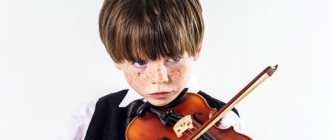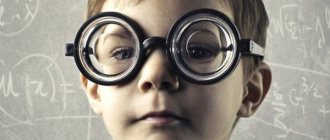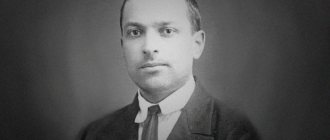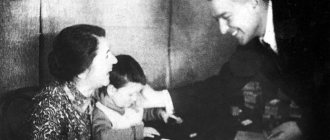Identification and development of gifted children is a priority direction of the modern education system. It is carried out at all levels: kindergarten, school, college, university. New centers for the gifted are opening, and programs in general education institutions are being restructured. It is important to recognize giftedness as early as possible and help the child with socialization.
What is giftedness
Let us define the concepts of “giftedness” and “gifted.” Giftedness is, according to a definition from psychology, an innate mental property that develops throughout an individual’s life. These are outstanding abilities that allow you to achieve greater success than other people in one or more activities.
Gifted children are students and pupils who stand out from others with their achievements, actions, judgments, interests, and habits. Or who have the prerequisites for outstanding achievements in one or more activities visible to the naked eye.
Conditions affecting giftedness:
- genetic factor, that is, innate prerequisites, inclinations;
- sociocultural environment, development conditions;
- personality activity and desire for self-development.
The development of giftedness depends not only and not so much on innate characteristics (inclinations), but on the coordinated actions of parents and teachers, and the activity of the gifted person himself. Without active work, inclinations will not develop into abilities, and abilities will not become talent, it will not turn into genius. 99% of giftedness depends on social and psychological factors. Giftedness and abilities are different stages of the same thing (inclinations).
So what is the characteristic of giftedness, is it an innate or acquired quality? Both. These are innate inclinations that, under the influence of the environment, become acquired abilities, knowledge, abilities and skills that determine talent, and talent. Without favorable conditions it will not develop. Particular attention should be paid to the development of abilities in childhood, this is a sensitive period.
What is giftedness? There are two opposing opinions in psychology. Some psychologists believe that all individuals are gifted from birth and every student can be developed to this level. Others believe that some people have the prerequisites for giftedness, they need to be found and developed. The truth is in the middle: many people have a tendency to be potentially gifted, but in practice only a few people show real results.
Some students cannot reach their potential due to internal barriers or developmental problems, for example, stuttering, conflict, or shyness. Others fall behind in the school curriculum, but at home they organize their own activities and achieve great success in them. If psychologists, parents, and teachers help a student get rid of barriers, then he will be able to unlock his potential.
Psychological theories and schools
A large number of psychological schools have studied giftedness. The initial theses of many researchers were erroneous. A striking example of ambiguity is the work devoted to the role of heredity and environment, created by psychologists at Stanford and Chicago universities led by
L. Theremin and F. Freeman. Researchers have studied factors such as race and social environment. The enormous scientific work was controversial. In contrast to L. Theremin, psychologist F. Freeman argued that upbringing and parents play a huge role.
The model developed by J. Guilford, a representative of the psychological school at the University of Nebraska, was called the “Structure of Intelligence”. It served as the basis for many concepts of pedagogy. The researcher paid much attention to memory, cognition and logic.
Giftedness in psychology is a category that is not only narrowly focused, but also general. This opinion was expressed by the Soviet scientist N.S. Leites.
The psychologist suggested considering the category through the prism of age-related changes. He introduced the term “age-related giftedness.” The researcher argued that mental capabilities increase over the years, there is a constant displacement of old properties and the formation of new ones.
Professor and Director of the Institute of Educational Psychology and Psychological Diagnostics at the University of Munich K. Heller believed that gifted children are characterized by:
- hypersensitivity to knowledge;
- interest in posing divergent problems;
- high level of concentration;
- creativity.
The thinking of such children, according to the scientist, is original, productive and associative. The psychologist said that brilliant children have a phenomenal memory, a high ability to assimilate everything new and a developed sense of curiosity.
American psychologist E.P. Torrance argued that a gifted child is creative and motivated. The same concept was adhered to by the Soviet researcher A.M. Matyushkin, believing that creativity is the basis, and intelligence is the superstructure.
Head of the Russian Laboratory of Psychology of Abilities and Mental Resources named after. V.N. Druzhinin and the Institute of Psychology of the Russian Academy of Sciences M.A. Kholodnaya notes that studying intelligence requires natural and extreme conditions. She identified 3 forms of giftedness: competence, wisdom and talent.
The theory of giftedness is presented in the works of the scientist Yu.D. Babaeva. The specialist claims that genius is determined by a social factor. The researcher has developed a training to identify genius, through which a child’s potential can be constantly developed.
Giftedness in psychology is the achievement by a person of high results in areas of activity. According to modern psychologist V.S. Yurkevich, genius does not exist without a stable system of interests in a child. Giftedness always develops on the basis of favorite activities. Developed intelligence should be considered as a systemic mental product.
Types of giftedness
Psychologist V.I. Panov identified the following types of giftedness in children and their characteristics:
- General. All abilities are developed equally well; an individual can achieve success in everything.
- Artistic. It can be musical, visual or stage. There are mixed types, for example, artistic and literary.
- Practical. The student is highly aware of his strengths and weaknesses, and the ability to use both weaknesses and strengths. This species often goes unnoticed. Or he is mistaken for the social type of which he is a part.
- General intellectual and academic. Individuals with this type of ability quickly master concepts, easily remember, analyze, and process information. This allows you to achieve success in many activities.
- Special. Outstanding knowledge, skills, abilities in one of the areas. The student easily solves problems and comes up with behavioral strategies within the framework of specific activities.
- Creative talent. This non-standard thinking, behavior, perception is what distinguishes a student with this type of development of abilities. He stands out from the crowd, some consider him strange, and others call him a loser. These are inquisitive individuals with pronounced cognitive activity. Creativity can be revealed in any activity.
- Intellectual giftedness. This is the ability to achieve greater heights in learning. Such students easily and with interest analyze information, study and compare facts. They have a high level of intelligence.
- Academic. They learn the school curriculum with interest and ease. Such students make good specialists.
- Sports. Fast, dexterous, strong, skillful - this is how these students can be described. Their sporting achievements stand out against the background of other students.
- Organizational. In another way it is called leadership or social. This type helps to get along with people, organize them for some business, and help them. Such individuals in the future may find themselves in pedagogy, psychology, and social work.
A student with leadership abilities is characterized by the following characteristics:
- high level of intelligence;
- ability to make decisions;
- responsibility;
- high ability to adapt;
- ability to work with abstract concepts;
- confidence;
- tolerance;
- altruism;
- tolerance.
In addition to the 10 types mentioned above, psychologists have identified another type - hidden talent. The student is different from the others, his activities are unique, but this does not stand out clearly. Usually such individuals are obsessed with one thing, it looks like a fanatical attitude towards something.
Psychology views giftedness as a deviation in mental development. Giftedness in psychology is an example of positive deviation, that is, it is a deviation from the norm, but for the better. However, it hides risks and dangers, especially with disharmonious development.
Your psychologist. The work of a psychologist at school.
| Models of giftedness |
| Psychological characteristics of intellectually gifted students |
| All pages |
Page 2 of 4
1.2 Types of giftedness and their characteristics
Foreign and domestic researchers identify different types of giftedness. However, before moving on to their characteristics, let us turn to the analysis of the concept of “giftedness”. An analysis of encyclopedic literature shows that giftedness is considered as: - “a qualitatively unique combination of abilities that ensures the success of an activity. The joint action of abilities representing a certain structure makes it possible to compensate for the insufficiency of individual abilities through the preferential development of others” [32, p. 289]; - “talent; the presence of internal conditions for outstanding achievements in activity” [33, p. 267]; — “an indicator of the level of development of general abilities that determines the range of activities in which a person can achieve significant success” [34, p. 290]. In research, giftedness is usually analyzed in several directions: Considering giftedness as a mental phenomenon, scientists note that from a pedagogical point of view it is important: giftedness, like any other mental reality, can be present in the psyche of a particular person in the form of reality or in the form of the possibility of its implementation [35 ]. As a psychological phenomenon, giftedness is reflected in the concept of giftedness by B.D. Bogoyavlenskaya: giftedness is “a systemic quality of the psyche that develops throughout life, which determines the possibility of a person achieving higher (unusual, extraordinary) results in one or more types of activity compared to other people” [36, p. 47]. N.S. Leites emphasizes the social aspect of giftedness. As a social phenomenon, it represents a special form of manifestation of the creative nature of the psyche in an explicit and age-appropriate form, the implementation of which requires the presence of not only natural inclinations, but also environmental conditions [14]. V.S. Yurkevich notes that there are “different types of giftedness, and some of them are not yet considered giftedness. And not only at school” [37, p.98]. The main types of activities of schoolchildren include: practical, cognitive, artistic-aesthetic, communicative and spiritual. The systematization of types of giftedness is determined by the criterion that forms the basis of the classification. In giftedness, both qualitative and quantitative aspects can be distinguished. Qualitative characteristics of giftedness express the specifics of a person’s mental capabilities and the characteristics of their manifestation in certain types of activity. Quantitative characteristics of giftedness allow the degree of their expression.
Figure 1. Criteria for identifying types of giftedness and value activity. The spheres of the psyche are represented by the intellectual, emotional and motivational-volitional. Accordingly, the following types of giftedness can be distinguished: - in practical activities - giftedness in crafts, sports and organizational; - in cognitive activity - intellectual and academic talent; - in communicative activities - leadership and attractive talent; - in artistic and aesthetic activities - musical, choreographic, visual, scenic and literary-poetic talent; - in spiritual and value-based activities - giftedness, which manifests itself in the creation of new values and serving people. These types of giftedness are clearly presented in Figure 2.
Figure 2. Classification of types of giftedness according to the criterion “types of activities and the spheres of the psyche that support them”
The classification of types of giftedness according to the criterion of “types of activity and the spheres of the psyche that support them” is the most important in terms of understanding the qualitative uniqueness of the nature of giftedness. Let us dwell in more detail on the characteristics of the types of giftedness according to this criterion. Psychomotor (sports) talent is an innate human characteristic that determines a high level of sports achievements. However, the realization that high achievements in sports activities are possible only with sports talent did not come immediately. For a long time, there has been a discussion among scientists about what is decisive in achieving sports success: natural talent or work, education, training. This discussion often featured extreme points of view. Some were of the opinion that any motivated person can become a champion. Others believed that sports talent presupposes a complex of natural qualities that make it possible to reach the peak of sports in the process of many years of training. Thus, the modern point of view on sports talent is reflected in the statement of S.Yu. Sokolik: “Sports talent implies a complex of abilities as morphofunctional and psychophysiological inclinations realized in specific activities, which are biological development potential” [38, p. 26]. Children belonging to the group with psychomotor (sports) giftedness are distinguished by such characteristics as energy, desire to participate in all kinds of competitions, outdoor sports games, reaction speed, ease of movement, good coordination, and physical endurance. General intellectual and academic talent. General intellectual talent is manifested in mastering all types of activities, which require certain mental qualities. In the studies of E.A. Golubeva used the success of mnemonic, intellectual and educational activities as indicators of general abilities [12]. They were compared with indicators of three properties of the nervous system: strength, lability, activation. A connection was established between high intelligence scores according to A. Wechsler’s test and a weak and labile nervous system [21]. The main thing is that children with this type of giftedness quickly master fundamental concepts and easily remember and retain information. Their highly developed information processing abilities allow them to excel in many areas of knowledge. Academic talent has a somewhat different character, which manifests itself in the success of learning individual academic subjects and is more frequent and selective. These children can show high results in ease and speed of progress in mathematics or a foreign language, physics or biology and sometimes have poor performance in other subjects , which are not perceived so easily by them. The pronounced selectivity of aspirations in a relatively narrow area creates its own problems at school and in the family. Parents and teachers are sometimes dissatisfied that the child does not study equally well in all subjects, refuse to recognize his giftedness and do not try to find opportunities to support and develop special talents. Social giftedness is the exceptional ability to form mature, meaningful relationships with others. There are such structural elements of social giftedness as social perception and expression, prosocial behavior, a high level of development of social intelligence and control [19]. Social intelligence is understood as an integral intellectual ability that determines the success of communication and socio-psychological adaptation, the ability to predict both one’s own and other people’s behavior in various areas of human activity, to recognize a person’s intentions, feelings and emotional states by non-verbal and verbal expression. In personal terms In the structure of a socially gifted individual, empathy occupies a special place - the ability to empathize with another person, to respond flexibly to changes in his emotional state. Thus, the concept of social giftedness covers a wide area of manifestations associated with the ease of establishment and high quality of interpersonal relationships. These features allow one to be a leader, that is, to show leadership talent, which can be considered as one of the manifestations of social talent along with attractive talent. Attractive talent is the ability to interact between two (or more) people, aimed at coordinating and combining their efforts in order to establish relationships and achieve a common result. Leadership talent is a set of natural, social and spiritual abilities and capabilities of a person that allow him to influence other people, have power over them and manage their activities in achieving common and individual goals. Researchers (E.I. Vlasova, A.N. Ilyin, E.A. Panko, D.V. Ushakov) indicate the following traits of a person with leadership talent: - above average intelligence; - ability to make decisions; - ability to deal with abstract concepts, planning for the future, and time constraints; - a sense of purpose, direction of movement; — flexibility; adaptability; - sense of responsibility; - self-confidence and self-knowledge; - persistence; — enthusiasm; - ability to express thoughts clearly. In artistic and aesthetic activities, there are five types of talent: musical, choreographic, visual, scenic, literary and poetic. Musical talent is the highest and highly individualized manifestation of musical ability. Indicators of musical talent are a brilliant ear for music, phenomenal memory, a flexible and perfectly coordinated motor “apparatus,” incredible learning ability (“grasping on the fly”) and titanic performance. Signs of giftedness in the field of music are obvious, often appearing in early childhood. Visual talent is the ability to create artistic creativity and performing skills in painting and sculpture. A.F. Lazursky highlighted such characteristics of artists as observation, lively receptivity to external impressions, combined with a clear, distinct memory; highly developed imagination, rich and vivid; significant development of feelings, constantly influencing judgments and all general mental activity; a tendency towards aesthetic experiences, forcing one to prefer aesthetic pleasures to everything else. Literary and poetic talent is the ability to create artistic texts. The development of giftedness occurs if a person or the child’s parents devote time to literary creativity. Such people are often generators of ideas, but the other side of the coin is a state of nervousness and fickleness. As a result, the support of others, proper motivation and the ability to respond positively to criticism are important to them. The basis of stage talent is acting ability. Giftedness in artistic and aesthetic activities is supported and developed in special schools, clubs, and studios. One of the major challenges is to ensure that these abilities are recognized and respected in mainstream schools. These children devote a lot of time, energy to exercise, achieving mastery in their field. They have few opportunities for successful studies; they often need individual programs in school subjects and understanding from teachers and peers. As a matter of fact, each type of giftedness involves the simultaneous inclusion of all levels of mental organization with a predominance of the level that is most significant for this particular type of activity. For example, musical talent is ensured by all levels of mental organization, while either sensorimotor qualities can come to the fore (and then we are talking about a virtuoso), or emotionally expressive ones (and then we are talking about rare musicality, expressiveness, etc.) [ 39]. Each type of giftedness, in its manifestations, covers to one degree or another all five types of activity. So, for example, the activity of a performing musician, being artistic and aesthetic, is at the same time formed and manifested in practical, cognitive, communicative and spiritual-value terms. In practical terms, it manifests itself at the level of motor skills and performing technique. In cognitive terms - at the level of interpretation of a musical work. In terms of communication, it covers the level of communication with the author of the performed work and the audience. In spiritual and value terms, it manifests itself at the level of giving meaning to one’s activities as a musician. The classification of types of giftedness according to the criterion of “type of activity and the spheres of the psyche that support it” is the most important in terms of understanding the qualitative uniqueness of the nature of giftedness. According to the criterion “degree of development of giftedness,” two types of giftedness are distinguished: actual and potential. Actual giftedness is a psychological characteristic of a child who has a current level of development that exceeds the age and social norm when performing an activity. In this case, of course, we are talking not only about educational, but also about a wide range of different types of activities. Potential giftedness is a psychological characteristic of a child who has only certain mental capabilities for high achievements in a certain type of activity. The development of potential talent can be hampered by unfavorable conditions, which include difficult family circumstances, insufficient motivation, low self-regulation, lack of the necessary educational environment, etc. According to the criterion of “form of manifestation” they differentiate: - obvious talent; - hidden talent. Obvious giftedness manifests itself brightly and clearly in a child’s activities, even in unfavorable conditions. The child’s achievements are so obvious that his talent is beyond doubt. Hidden talent manifests itself in a disguised form; it is not noticed by others. As a result, there is a danger of erroneous conclusions about the lack of giftedness in such a student. Such children are often classified as “unpromising”, as a result of which they may be deprived of the necessary help and psychological support. According to the criterion “breadth of manifestations in various types of activities” we can distinguish: - general talent; - special talent. This point of view is shared by F. Galton, S. Marland. In psychology, the idea of two types of general giftedness has also been established: intellectual giftedness and creative giftedness (creativity) (D. Guilford, P. Torrence, D. B. Bogoyavlenskaya, etc.) [33]. General talent manifests itself in relation to various types of activities and acts as the basis for their productivity. The psychological core of general talent is the result of the integration of mental abilities, motivational sphere and value system, around which emotional, volitional and other personality qualities are built. The most important aspects of general giftedness are mental activity and its self-regulation. Special giftedness is giftedness in certain types of activities, which is based on abilities. For example, musical, artistic, mathematical, linguistic, sports, technical, etc. According to the criterion of “features of age-related development,” early and late giftedness are distinguished. The decisive indicators in this case are the rate of mental development and those age stages at which giftedness manifests itself explicitly. However, it must be taken into account that accelerated mental development and early discovery of talents are not always associated with high achievements at an older age. In turn, the absence of clear manifestations of giftedness in childhood does not mean negative conclusions regarding the prospects for further mental development of the individual. Moreover, there is a certain relationship between the age at which talent manifests itself and the area of activity. Giftedness manifests itself most early in the field of art, especially in music. In science, the achievement of significant results appears later than in art, which is due to the need to acquire deep and extensive knowledge, without which scientific discoveries are impossible. An example of early giftedness is “child prodigies” (translated from German as “wonderful child”). A child prodigy is a child of preschool or primary school age who has achieved extraordinary, brilliant success in a certain type of activity (mathematics, poetry, music, drawing, dancing, singing etc.). Intellectual prodigies occupy a special place among such children. These are precocious children, whose capabilities are manifested in an extremely high advanced rate of development of mental abilities. They are characterized by extremely early, from 2-3 years of age, mastering reading, writing and counting; mastering a three-year training program by the end of the first grade; choosing challenging activities of your own free will. They are distinguished by an unusually high development of individual cognitive abilities (brilliant memory, unusual power of abstract thinking, etc.). Creative giftedness. First of all, debate continues about the very need to distinguish this type of giftedness. The essence of the disagreement is as follows. Some experts believe that creativity is an integral element of all types of talent, which cannot be presented separately from the creative component. Thus, AM Matyushkin insists that there is only one type of giftedness - creative, since if there is no creativity, it is pointless to talk about giftedness. Other researchers defend the legitimacy of the existence of creative talent as a separate, independent species. One of the points of view is that talent is generated either by the ability to produce, put forward new ideas, invent, or by the ability to brilliantly execute and use what has already been created. At the same time, researchers show that children with a creative orientation often have a number of behavioral characteristics that set them apart and that evoke not at all positive emotions in teachers and people around them: - lack of attention to conventions and authorities; - greater independence in judgment; - subtle sense of humor; — lack of attention to the order and organization of work; - bright temperament Thus, creative talent is the generation of unusual ideas, deviation from traditional patterns of thinking, and the ability to quickly resolve problem situations. Our textbook examines, first of all, the intellectual talent of schoolchildren. It should be noted that in the psychological and pedagogical literature different definitions of intellectual giftedness are given. D.B. Bogoyavlenskaya interprets intellectual talent as “a manifestation of an unusually high level of mental development (all other things being equal) and qualitative originality of mental activity” [40, p. 56]. In the structure of intellectual giftedness, she identifies the following components: intelligence, creativity, learning ability, cognitive motivation, intellectual activity. In the cognitive concept of M.A. Kholodnaya, intellectual talent is considered as “the level of development and type of organization of individual mental experience, which provide the opportunity for creative intellectual activity, that is, activity associated with the creation of subjectively and objectively new ideas, the use of innovative approaches to solving problems, and openness to contradictory aspects of the situation" [13, p. 143]. Signs of intellectual giftedness are those characteristics of a gifted child that are manifested in his real activities and can be assessed by observing the nature of his actions. These include: - increased exceptional intelligence; — dynamism and efficiency of thought processes; — complete immersion in your preferred field of activity; — successful application of knowledge and skills in practical situations; - sharp analytical mind; - stable ability to pose and solve problems, make optimal choices; — developed planning skills; - persistence in achieving goals. The study of the psychological mechanisms of intellectual giftedness is necessary to develop valid means of diagnosing its manifestations and promoting the development of individuals' potential. Intellectual talent is a state of individual psychological resources (primarily mental), which provides the possibility of creative intellectual activity. This activity is associated with the creation of subjectively and objectively new ideas, the use of non-standard approaches to developing problems, sensitivity to the key, most promising ways of finding solutions in a certain subject area, and openness to any innovation. In psychology, the concept of “intellectual giftedness” is ambiguous, which is due to the presence of various criteria, on the basis of which a person is identified as intellectually gifted. With the manifestation of intellectual giftedness, according to the cold, such types of intellectual behavior are correlated: 1) persons with a high level of development of general intelligence with indicators of 135-140 units, they are found using psychometric intelligence tests (smart); 2) persons with a high level of academic performance - indicators of educational achievements; reveal using criteria -oriented tests (brilliant students); 3) persons with a high level of development of sabotage abilities - indicators of fluency and originality of ideas; detect based on creativity tests (creatives); 4) persons with high academic performance in the implementation of specific types of activities having a large amount of subject-specific knowledge, as well as significant practical experience in the appropriate subject area (competent); 5) faces with extraordinary intellectual achievements embodied in real, objectively new, universally recognized forms (talented); 6) persons with a high level of intellectual capabilities associated with the analysis, assessment and forecasting of everyday life (wise) [13]. Intellectual giftedness, at first glance, is always manifested in ultra -high indicators of intellectual activity. In Western psychology, the tendency dominates the assessment of intellectual giftedness based on standard psychometric tests, the highest estimates for which are obtained by approximately 2% of the subjects - they are considered intellectually gifted. The contradiction is that standard intelligence tests record only one aspect of individual intelligence - convergent abilities, and intellectual giftedness is a wider phenomenon. One of the grounds to identify intellectual giftedness with a high level was the results of a longitudinal study of Lermen, which was carried out during the 20th and 70s of the XX century. 1,500 students were selected, who received 140 or more points on the intellectual scale of Stanford-Bina. After 40 years, the achievements of persons recognized as gifted in childhood studied again and revealed the following results: 60% of the respondents graduated from the university; 14% of men and 4% of women had the highest scientific titles; Men had 2000 scientific articles, 60 monographs, three novels; The salary of most of them was higher than the average level. Consequently, a significant part of children with high -kimurovo IQ became highly productive in the intellectual adults. However, none of them became an outstanding creative person, and 15% of the population did not succeed according to the standards of American society (had a relatively low salary, often needed psychiatric care). On this basis, it was concluded that ultra -high indicators ^in childhood do not directly correlate with the manifestations of intellectual giftedness in adulthood. The question of how successfully the intellectual and professional fate of children with medium and low values was obtained by open [41]. This led to the fact that some researchers, in particular, L.I. Larionova, complement the content of intellectual giftedness with such a component as spirituality. “Intellectual giftedness is a dynamic integral personal education, including an intellectual component, creativity and spirituality as the highest level of personality development, which is formed in the process of interaction and sociocultural environment and manifests itself in high creative achievements” [42, p. 158]. This allows us to consider the concept of intellectual giftedness as a dynamic integral personal education, which is formed in the process of interaction with the sociocultural space and manifests itself in high creative achievements. In this regard, in the structure of giftedness, we distinguish three components: intellectual, creative and spiritual. These components, being to a certain extent independent, are closely interconnected and interdependent. Spirituality is a system -forming factor in giftedness, it is associated with the highest level of personality development and determines the direction in which the creative process occurs. In other words, intelligence, creativity, spirituality are not just individual qualities of a gifted personality. The giftedness is found in the personality when all its psychological qualities are covered and transformed by spirituality, that is, in essence, it became its manifestations. The high spiritual level of personality is a prerequisite that, on the one hand, the gifted student realizes his gift to the benefit of humanity, And, on the other hand, it is a prerequisite for the development of gifted students. The listed types of giftedness are manifested in different ways and meet specific barriers on the path of their development, depending on the individual characteristics and the originality of the child's environment.
<< Previous — Next >>
Features of a gifted child
What is the difference between a gifted student and a capable and educated student? Motivation. Gifted students are interested in the content, not the grades. They easily admit that they don’t understand something and are not afraid to try and fail. They are interested in the learning process itself and the search for answers to questions.
There is no single portrait of a gifted child. However, it is customary to distinguish between a harmonious type of gifted person and a disharmonious one. Let's take a closer look at them.
Harmonious type of development
Physical, mental, intellectual development is harmoniously combined and corresponds to each other. At the same time, physical, mental and intellectual development corresponds to personal development. Such individuals quickly adapt to school and show equal success in all subjects. In adult life, they quickly and easily find their calling and easily get along with other people.
Features of gifted individuals with a harmonious type of development:
- creative activity;
- the tendency to express your ideas, opinions and defend them;
- use of innovative methods, going beyond the requirements of the task;
- high level of self-organization, self-regulation;
- high level of independence, including when choosing tasks and performing new tasks;
- cognitive motivation and activity are higher, and activities are more productive if teachers and parents do not interfere with their help and advice;
- increased curiosity;
- perfectionism (without the control of teachers, parents, psychologists turns into self-criticism, inability to finish what started);
- interest in problems, cognitive motivation, which does not decrease even when encountering difficulties;
- independence from the opinions of others;
- spontaneity and unpredictability.
Such students need to be given freedom, encouraged initiative and independence. They themselves choose the curriculum, subjects for in-depth study, and additional classes. Like others, they need a mentor, but a mentor, not a teacher. Such teachers must have a different level of knowledge, skills and abilities. They should not only be able to answer the student’s tricky questions themselves, but also help him master methods of self-education. Teach how to search for information through research, the Internet, and communication with other people.
Disharmonious type
From the outside, such students look like children with developmental delays or children with accelerated development. The specificity is that their development occurs unevenly. That is, outstanding abilities in one thing are combined with extreme immaturity in another. For example, high intelligence is combined with everyday immaturity. Or the child cannot read, but is distinguished by creative abilities in drawing. Or he has high intellectual and creative abilities, but is completely immature mentally, conflict-ridden, cannot adapt, and is characterized by mental instability. Such children are at risk and face psychological, psychosomatic and psychopathological problems. Their life cannot be called easy and carefree.
Characteristics of a personality with a disharmonious type of development:
- intellectual and creative abilities are noticeably ahead of emotional, physical, social development;
- pronounced differentiation of interests corresponding to expressed abilities;
- the dominance of personal interests in the value system, moreover, a specific type of activity represents interest and value, this looks like an obsession;
- inflated or unstable self-esteem (either too high or too low);
- perfectionism and excessively high demands on oneself, which leads to dissatisfaction with oneself;
- tendency to set unattainable goals, to be upset by failures;
- increased impressionability and sensitivity;
- an increased sense of responsibility, which leads to self-flagellation, guilt, and depression;
- increased excitability, tendency to affect;
- shyness and reticence;
- predisposition to psychosomatic diseases;
- obsession with activities for which one has the ability and which is easy to achieve;
- lack of self-regulation and volitional qualities for organizing other activities;
- avoidance of sports;
- They are more successful in absorbing and reproducing knowledge than in coming up with something innovative, but under suitable learning conditions this problem can be solved.
Children with disharmonious development are prone to hysterical and infantile reactions. For example, they may react sharply to criticism or remark. Such children often find themselves in conflicts with teachers and classmates.
Diagnostics
Based on the differentiation of scientists, genius can be:
- Psychomotor. Associated with precision of movements.
- Intellectual. It is caused by the high development of thought processes.
- Social. Defined by developed communication skills with other people.
- Spiritual. Associated with ethical and moral qualities.
- Creative. Determined by the level of creativity.
The psychomotor category includes the test:
- Purdve. Serves as a tool to determine the level of coordination.
- Crawford. Allows you to evaluate the dexterity of manipulating small objects.
- Arnheim and Sinclair. Evaluates the coordinated functionality of the hands and eyes.
To assess the level of thinking, a scale is used:
- Stanford-Binet. Assesses the degree of development of the child.
- Wexler. Analyzes creative abilities. Can also be used for adults.
- McCarthy. It is designed for children from 2 to 8 years old. Evaluates memory.
- Thorndike and Hagen. Denotes cognitive skills.
To analyze academic genius, the following is used:
- General testing. Assess reading, numeracy and writing skills.
- Iowa test. Analyzes vocabulary, reading speed and communication.
- Stanford Achievement Test. Provides analysis of skills in mathematical calculations and oral communication.
- California Achievement Test. Evaluates reading fluency, rapid comprehension, handwriting and math skills.
The following authors use tests to identify creative abilities:
- Guildford. Reveals creative thinking.
- Torrance. Reveals creativity and
- presence of imaginative thinking.
- Pimma. Evaluates group activities.
- Horner and Y. Hemenway. Reveals unusual thought processes and creative potential.
If a psychologist or teacher is faced with a broader task or selection is assumed, then the diagnostic scope expands significantly. It includes tests to reveal the ability of a genius child to communicate with peers and adults or monitoring psychomotor or emotional imbalances.
However, the most advanced methods are not guaranteed to be error-free. It should be noted that no test can cover all types of giftedness.
Genius testing can be carried out in educational centers. Psychologists use various methods. Game forms are also included. The results are recorded in a special form. After processing the data obtained, conclusions are drawn about leading, accompanying and lagging abilities. The procedure lasts 45 minutes. The cost of the service is 1500 rubles.
Signs of giftedness
In pedagogy, it is customary to say not “a gifted child,” but “a child with signs of giftedness.” The fact is that children's giftedness differs from adult giftedness in the inconstancy and dynamism of its characteristics. Suddenly, all the signs can disappear, and the child who was considered gifted becomes average.
Signs of a child's giftedness:
- high level of activity performance;
- specific operating strategies (ensure special productivity and high quality);
- tendency to do everything your own way, search for innovative ways to solve problems;
- going beyond the primary goals and characteristics of activities with the help of innovations;
- high level of self-regulation and self-organization;
- the tendency to carefully analyze a problem before making a decision, to engage in reflection;
- systems thinking (the ability to see an object, a problem in the conditions of different connections);
- the ability to structure activities, collapse and expand narrow areas of knowledge to find solutions at the right time;
- ease of transition to generalization and interpretation of individual objects and phenomena;
- the ability to quickly master any type of information in the area that interests the child;
- outstanding abilities in something, for example, phenomenal memory, observation, the ability to perform complex calculations in the mind, etc.
The child’s motivational sphere requires special attention. From an early age, gifted children have a tendency to learn on their own. The task of parents and teachers is to create conditions in which the child can do what interests him.
Signs of outstanding abilities in the motivational sphere:
- increased interest and sensitivity to certain types of activities (physical, cognitive, artistic, etc.) or to individual objects and their properties (sounds, colors, plants, etc.);
- increased curiosity, voluntary going beyond established tasks;
- expressed interest, obsession with any type of activity, subject or any matter (perseverance, hard work, search for problems and their non-standard solutions);
- tendency towards perfectionism, perfection;
- the tendency to set difficult goals and persistently achieve them with your work;
- high self-demand.
The above-mentioned signs themselves are not strict criteria for children’s giftedness. Moreover, they are often not all found or are inconsistent. However, the presence of at least one of these signs is a reason to observe the child and pay special attention to him.
Teacher A.I. Dorovskoy determined the development of signs of giftedness by age:
You can notice the signs while observing the child in any activity. To more accurately determine abilities that were suspected during observation, psychological questionnaires and other techniques are used.
Development of giftedness
It is customary to distinguish two types of giftedness: early and late. In the first case, such children are called child prodigies. Their talent is noticeable already at 2–3 years of age. They draw like world-class artists, speak several languages, write poetry, and perform complex calculations. Sometimes such children are also called indigo. The earliest talent to manifest itself is in art, especially in music. Last of all is giftedness in science (discoveries).
There are cases where giftedness manifested itself at the age of 16-18. According to one theory, every gifted child seems to have a program written in them that determines when and what abilities will manifest themselves. Giftedness cannot be “pulled out” before the “recorded” time. However, much depends on the conditions of upbringing. If they are unsuitable, then outstanding abilities will remain undiscovered.
What conditions of family education contribute to the development of giftedness:
- cognitive activity of parents;
- joint activities of parents and child;
- joint decision, discussion of problems that go beyond everyday life;
- the content of learning and the development of the child has a higher priority than academic grades;
- close, trusting, warm relationship with the child;
- providing independence and encouraging initiative;
- attention to the child;
- the whole family recognizes the value of education.
It is impossible to raise a gifted child in conditions of overprotection, authoritarianism, and a permissive parenting style. A democratic parenting style is the best option.
Conditions of school education for the development of giftedness:
- granting freedom;
- orientation of the school curriculum to the immediate zone of development (slightly more complex than current opportunities, so that the child wants to overcome difficulties and remains motivated and interested);
- freedom in self-expression, especially in expressing opinions in class, challenging theories and someone else's views.
It is important to treat your child with respect both at home and at school. The development and training of a gifted child always requires a strictly individual approach. To draw up an individual support program, parents can contact the PMPK - a psychological, medical and pedagogical council at school or kindergarten. Or see a full-time psychologist. Gifted children should be educated in special centers and schools with in-depth study of individual subjects.
The problem of children's giftedness
What is the problem of gifted children? If parents, psychologists and teachers notice giftedness and create conditions for its development, then such children live happier lives than their peers. They achieve great heights in their studies, and then at work, their personal lives are more successful and easier. They easily adapt to life changes and endure difficulties. But if giftedness remains undetected, and the conditions of development and learning do not correspond to the child’s characteristics, then he has to face a number of difficulties:
- the training program seems boring and uninteresting, which affects academic performance and discipline;
- creativity and the need for self-realization goes into a destructive direction, for example, hooliganism, addiction, and other deviations;
- problems arise in the field of social interaction and communication;
- emotional and mental instability is observed.
A gifted child feels that he is not like everyone else. Under normal conditions, in which he is bored, two models of behavior occur: he behaves arrogantly, often conflicts, or he withdraws into himself, isolating himself from the society of his peers.
Let us remember that giftedness most often manifests itself in one area, that such children are selective in activity. That is, they can show interest and do well in one subject, but at the same time not reach even a C in others. Teachers and parents scold them for this. Thus, gifted children are at risk for school maladaptation and negative deviations. Rejection by teachers and peers, problems with professional self-determination, conflicts, bullying, loneliness are a small part of what a gifted child faces. This is the problem of children's giftedness.
Indigo children
Now there is a special type of giftedness - indigo children. However, this group of children is not recognized by any science. The term exists on its own, but has no clear definitions. It was first introduced by Nancy Ann Tapp, who argued that indigos were those children who had superpowers.
Modern scientists do not identify any criteria by which it would be possible to determine that a child belongs to this group, but there are still some conditional differences:
- Children often withdraw into themselves and have poor communication skills.
- They are individualists, completely deny the presence of any authorities, and refuse to obey anyone.
- They are distinguished from other children by their high level of intelligence and creative potential.
- They show interest in sciences that have no connection with each other.
- They have a lot of energy and almost never sit still.
- They are prone to depression; their mood often changes without obvious reasons.
- They are difficult to educate; parents find it difficult to cope even with a small child.
- Children have very well developed intuition; they almost always feel the approach of danger.
- They are good at digital technologies and excel at programming.
This type of giftedness manifests itself in children of primary school age and even earlier.











